|
HOME: www.hiltonpond.org |
|||
|
|
|
All maps, charts, text & photos © Hilton Pond Center Immature male Ruby-throated Hummingbird (above) with HUMMINGBIRDS IN COSTA RICA: Between December 2004 and March 2011 Hilton Pond Center led 11 expeditions to Guanacaste Province, Costa Rica, to band and study wintering populations of Ruby-throated Hummingbirds (RTHU), Archilochus colubris. We were there because Ernesto Carman Jr., one of the country's finest young naturalists, had discovered substantial numbers of RTHU nectaring in plantations of Aloe Vera, an African succulent grown to provide gel and juice for all sorts of health-related products. Groups of citizen scientists joined us on our Operation RubyThroat trips--organized through Holbrook Travel--and we were quite successful with nearly 800 RTHU captured. This was far more than the 46 ruby-throats that had been banded in history in ALL of Central America prior to the beginning of our long-term study.
All maps, charts, text & photos © Hilton Pond Center Ruby-throated Hummingbirds breed in the eastern U.S. and southern Canada, with the vast majority bailing out for the Neotropics during cold months of the year. Based on our work and observations by others, it appeared the aloe fields at Liberia and Cañas Dulces in Guanacaste (on Costa Rica's Pacific side, see map above) were the southernmost destination for substantial numbers of RTHU. However, in Autumn 2010 ever-vigilant Ernesto documented another wintering population east of San Jose near where he and his family live on Finca Cristina--a shade-grown organic coffee farm at Paraíso. In the valley below at the tiny town of Ujarrás, Ernesto reported RTHU and plenty of other hummingbird species were taking advantage of copious nectar provided by year-round blossoms of Chayote or Pear Squash, Sechium edule, a native vegetable grown commercially for domestic use and export. Ruby-throats are seldom sighted on Costa Rica's Caribbean side, so Ernesto's discovery was ample reason for us to embark upon yet another Neotropical expedition--this time to Ujarrás in the Central Valley, a place where Ruby-throated Hummingbirds are "not supposed to be." • PRE-ARRIVAL ACTIVITIES • As noted in last week's installment, we departed Hilton Pond Center for Costa Rica a week in advance of the citizen scientists who would join us for our nine-day hummingbird banding expedition. We arrived at San Jose airport on the afternoon of 6 November, met by expert guide and colleague Ernesto Carman Jr. and his lovely and talented wife Elaida "Ela" Villanueva Mayorga (below).
All maps, charts, text & photos © Hilton Pond Center Ernesto was guide and bilingual interpreter on our first hummer trip to Costa Rica in 2004 and has been an irreplaceable part of Operation RubyThroat's Neotropical work ever since--including two excursions to Belize and one to Guatemala. Today he's a true colleague and close friend. Ela participated in that first trip on scholarship as an educator-naturalist; on several expeditions thereafter she helped out as net-tender and bird extractor and has turned into an accomplished nature photographer.
All maps, charts, text & photos © Hilton Pond Center On the morning of 8 November the "Omega Group" (master bander Bill Hilton Jr. and Ernesto Carman Jr.) made the 15-minute downhill drive from Finca Cristina to Ujarrás, where 'Nesto had found all those Ruby-throated Hummingbirds feeding in Chayote fields. Throughout the flat and fertile river valley, farmers installed hundreds of acres of wire grids hung on six-foot-tall concrete posts. At the base of each alternate post they planted a Chayote vine that in a matter of six weeks would grow up the post and begin spreading out on the grid (above).
All maps, charts, text & photos © Hilton Pond Center This network of horizontal trellises is ideal for growing Chayote, whose blossoms stick out above the layer of leaves and tendrils and are available for pollination by hummingbirds and other nectarivorous birds. After fertilization, the Chayote fruit--a type of squash--hangs beneath the grid and slowly ripens in shade cast by the foliage. Workers come along every other day or so, ambling along in under shady trellises and reaching up to pick the mature Chayotes.
All maps, charts, text & photos © Hilton Pond Center From a lookout near Ujarrás one gets an idea of just how vast the Chayote fields really are--something on the order of 1,500 acres. (In the photo above, a a small sampling of Chayote plots lies in the foreground, ruins of the old 1560s-era church are upper left, and backwaters of Lake Cachi are in back.) It's easy to imagine such an expanse of nectar-laden blossoms would be attractive to wintering Ruby-throated Hummingbirds, but other resident hummers--those found year-round in Costa Rica--also have discovered Chayote nectar; these other trochilids make good use of Chayote, especially before RTHU arrive in autumn and after they leave in spring. In fact, during the weeks leading up to our expedition we got frequent e-mails and even excited phone calls from Ernesto as he tallied one hummingbird variety after another. Incredibly, he was able to spot more than two dozen hummer species among the Chayote--including a couple that had never been reported from Orosi Valley! (Next week's installment will be an account of ALL the kinds of hummers we captured and observed while banding our target species.)
All maps, charts, text & photos © Hilton Pond Center On-site, the Omega Group quickly devised a way to use the wire grid to stabilize poles and erected a sample deployment of four mist nets beneath the Chayote arbor in Plot #1. Only three of the four net shelves could be fully open because the leafy ceiling wasn't quite high enough. With our nets in place we played the waiting game, sitting back to see what might get caught--and it didn't take long to confirm that our unconventional net set would work perfectly well--at least for capturing Tennessee Warblers. The first TEWA was snared about two minutes after we put up the final net, and we handled a lot more of this species that morning--13 to be exact. Thin-billed Tennessee Warblers have been our most regular parulid through the years in Costa Rica and we're beginning to think they may be the most common North America Wood Warbler--possibly exceeded only by Yellow-rumped. In all we banded 93 TEWA during our November 2011 attempts to capture hummingbirds at Ujarrás; we could have banded many more but ran out of the Size 0A bands they require. The photo above shows the great variation in plumage colors we observed among those Tennessee Warblers; the grayer bird at left is an adult while the one at right is a youngster that fledged this past summer.
All maps, charts, text & photos © Hilton Pond Center About an hour after netting that first TEWA we had our initial November capture of a Ruby-throated Hummingbird in Costa Rica, a young male with light streaking on his throat and six sparkling red gorget feathers. To our knowledge this was the first in-hand evidence that RTHU do indeed occur during non-breeding months in the Orosi Valley--further east in Costa Rica than most authorities have stated. Historically, observers have reported less than a half-dozen ruby-throats annually from the Caribbean Slope; we could see at least twice or thrice that many flying around the Chayote farm while we were running mist nets. Ernesto also had hung four hummingbirds feeders at El Cas, a lushly planted traditional outdoor restaurant (above) literally surrounded by Chayote plots, and when we went there for a snack we saw even more RTHU coming to dine on our sugar water mix. Ujarrás apparently was winter home to far more RTHU than anyone expected.
All maps, charts, text & photos © Hilton Pond Center The Omega Group worked through the morning, eventually banding three Ruby-throated Hummingbirds (all young males), 13 Tennessee Warblers, and a Northern Waterthrush--all Neotropical migrants that could be encountered back in the U.S. or Canada next spring or summer. With this kind of success with four nets in just a few hours we were confident the incoming group of citizen scientists would have an enjoyable, informative, and productive nine days in Costa Rica.
All maps, charts, text & photos © Hilton Pond Center • DAY ONE • Of the nine participants signed up for our November 2011 Operation RubyThroat hummingbird trip to Ujarrás, six were beloved "groupies" who had been with us on at least one previous Neotropical expedition. Some of the nine were coming from distant parts of the U.S. and decided to arrive in Costa Rica prior to 12 November, so on that day we were off to various hotels and the San Jose airport to assemble the troops. First off the airplane were two newbies from Maryland (l to r, above): Nancy Meier (Catonville) and Ethelyn Bishop (Laurel). As we made our rounds with first-time tico bus driver Carlos Rojas, we also gathered up Pat Barker (Charleston WV, veteran of Costa Rica 2010, Guatemala 2011 & Belize 2011); newbie Jane Griess (Rincon GA); Heidi Ondrasik (Seattle WA, Costa Rica 2011); Brenda Piper (Middleton MA, Costa Rica 2010, Guatemala 2011 & Belize 2011); Sherry Skipper (Golden CO, Belize 2010); and Wisconsin brothers and Costa Rica 2010 veterans Ken Wood (Black Earth) and Levi Wood (Madison). We were pleased to make new acquaintances but were especially excited to see so many old friends who had been in the field with us in the past. As soon as we had all our folks on board, newcomer Nancy Meier accepted the challenge to be Official List Keeper, responsible for maintaining an account of all bird species observed by the group during the nine-day trip. (Our only rule: A bird had to be seen by at least two group members for it to count on the list.) The list started as soon as the driver closed the door and got off to great start as participants started seeing all sorts of new Neotropical birds through the windows of the bus, including a White-tailed Kite (above right). We encountered heavy rain on the ride from San Jose to our destination, but that was the last time we had significant daytime precipitation during the week--an anomaly because November is still considered the "rainy season" in eastern Costa Rica.
All maps, charts, text & photos © Hilton Pond Center After about 90 minutes we arrived at Orosi and the "Hotel Tapanti Media Lodge Bar & Restaurant," our long-named home base for the week. (Our rooms were pleasant and the hotel offered good food in its Italian-style restaurant. Comfy beds, hot water showers, and full bellies are always important considerations on our trips.) After paying homage to the Terrible Trio of Tapirs that guarded our lodging (above), everyone unpacked, went to supper, got together for the evening orientation meeting, and hit the sack in anticipation of the next morning's trip to our field site. • DAY TWO • Ernesto was staying at Finca Cristina with Ela rather than at the hotel, but he was prompt as ever in showing up to awaken everyone with a woodpecker-like rap on each door. Unfortunately, when 'Nesto got to the trip leader's room he learned said leader had developed his first case of Montezuma's Revenge in 15 trips to the Neotropics, and the leader had no choice but to go back to bed. (It could have been that sushi at dinner two day's previous, but more than likely it was a bug picked up somewhere. We're happy to report that no one else took ill.) This unexpected and unpleasant turn of events meant we had to juggle the day's schedule, with Ernesto leading the group that morning on what was to have been an afternoon outing to Tapanti National Park. The ever-flexible group adapted quickly and after an early breakfast headed to the mountains, where they got a baptism by immersion into cloud forest ecology. Tapanti is perhaps the wettest locale in Costa Rica, with 280 inches of rain on average each year. (That's more than 23 feet!) Ernesto reportedly pointed out all sorts of natural wonders, from waterfalls to warblers and even a Red Brockett deer. (The trip leader deeply regrets his inability to participate in the field trip or take photos for inclusion herein.)
All maps, charts, text & photos © Hilton Pond Center The group returned to the hotel for lunch, after which the trip leader pulled himself together enough to board the bus for the 25-minute trip from Orosi to Ujarrás and its Chayote fields. Upon arrival veteran participants got a refresher course on how to erect mist nets while the newbies got their first taste of unfurling the 42-foot-long devices while protecting delicate mesh from being torn or fouled by vegetation.
All maps, charts, text & photos © Hilton Pond Center We also caught plenty of Tennessee Warblers--another seemingly ubiquitous species--but on this initial day in the field with the group we elected not to take time to band any. Instead we were waiting for our first Ruby-throated Hummingbird so we could demonstrate how we banded the species while ageing and sexing each bird and taking measurements that include weight (mass) and length of tail, wing chord, and culmen (ridge of upper mandible). We also wanted to show how to evaluate the hummer's plumage--including appearance of the gorget and molt progress in wing and tail feathers--as well as its fat condition and other attributes. And, last but not least, we needed to instruct our citizen scientists about the importance of correctly scribing all the data were were collecting for each in-hand hummingbird. Eventually, at 2:40 p.m., we did manage to snare a young male ruby-throat with lots of iridescent gorget feathers--much to the satisfaction of everyone in the group.
All maps, charts, text & photos © Hilton Pond Center About an hour later we also caught a female RTHU, so we were able to reveal subtle external differences between the sexes in this species. Among other things, females have a rounded #6 primary wing feather, a structure that is tapered and sharply pointed in males (above). Everyone was pleased at being able to see the hummer banding process from start to finish, so we closed and pulled at the nets with two new RTHU to our credit before heading back to the lodge for supper and the evening meeting. It was there the trip leader christened the current group of participants as "Chayoteers," paying homage to Operation RubyThroat's original Guanacaste "Pioneers" from 2004 and to the fact the latest trip's citizen scientists were they first to work in the Chayote fields in eastern Costa Rica.
All maps, charts, text & photos © Hilton Pond Center • DAY THREE • Still ill, the trip leader gallantly rose before dawn for the second day of field work and headed out with the group for Ujarrás. With preliminary instruction out of the way, the Chayoteers unfurled nets in record time and managed to snare five Tennessee Warblers and an immature male Baltimore Oriole by 7:45 a.m.
All maps, charts, text & photos © Hilton Pond Center We all were hoping for something a little different, of course, and weren't disappointed with the day's results: Three female Ruby-throated Hummingbirds, two immature males, and our first two adult males with full red gorgets, for a total of seven RTHU. Oh, and add to that a batch of four Indigo Buntings and seven more TEWA--one of which was carrying a heavily engorged tick beneath its lower mandible (above). We've encountered ticks on birds back at Hilton Pond Center and inevitably leave the parasites in place rather than risking damage to the host while trying to remove them. We also banded one immature female Yellow Warbler.
All maps, charts, text & photos © Hilton Pond Center Unlike bander-activated traps, mist nets are entirely unselective in what they capture, so we never know what we might encounter after we unfurl each day on our Central American study sites. Our U.S. federal permit allows us to band any Neotropical migrant--a bird that is likely to return to North America after wintering south of the U.S.-Mexican border; that's why those Tennessee Warblers, Indigo Buntings, and Baltimore Orioles are also legitimate recipients of our numbered aluminum bands. However, we often catch birds that aren't migrants at all but are year-round residents within Costa Rica. We can't use U.S. bands on these particular species but we can be impressed with how different their plumages and morphologies are from species back home. Group participants get to hold, photograph, and release these birds that collectively would make for a very nice digital slide presentation upon returning home. One such bird we caught on 14 November was the Blue-gray Tanager, Thraupis episcopus (above), a sexually monomorphic resident we consider to be among the most elegant avian species in all the Neotropics.
All maps, charts, text & photos © Hilton Pond Center After lunch the group headed out for Cartago and Lankester Botanical Gardens, home to a world-class collection of more than a thousand species of orchids. The facility, once private, is now administered by the University of Costa Rica for research and public education. Some orchids flowers are scarcely the size of a pinhead, while others like the unidentified one above are big and showy and almost impossible to ignore.
All maps, charts, text & photos © Hilton Pond Center The gardens at Lankester cover nearly 25 acres and include outdoor displays of bromeliads, bamboo, cacti, euphorbs, palms, and other native and ornamental species that occur in Costa Rica. On most days the walking trails--wheelchair accessible--are quiet and suitable for contemplation. The plantings were magnificent, but one of the most curious things we observed along the path was a cluster of two-inch-long creatures that, to our eye, was disguised as a pile of animal droppings (above). Pile participants had the interesting behavior of traveling in a tight clump, constantly moving forward by crawling over each other. We initially thought these unidentified organisms might be moth caterpillars, but thanks to Web site visitor Ed Saugstag we now know they are larvae of Sawflies, possibly Perreyia sp., and actually are hymenopterans in the Pergidae.
All maps, charts, text & photos © Hilton Pond Center • DAY FOUR • Chock full of Immodium once again, the trip leader wobbled onto the bus on the morning of 15 November, destined for what he hoped would be another productive day among the Chayote, and indeed it was. In addition to netting 19 Tennessee Warblers, the Chayoteers pulled in another immature male Baltimore Oriole. Of greater significance, they also caught two female Ruby-throated Hummingbirds and had a big influx of male RTHU, including two adults and ten immatures. This batch of 14 individuals banded from our target species would be respectable total for any day in the field and brought our running total to 26 RTHU at Ujarrás. When they weren't scribing or watching nets, the Chayoteers had their eyes open for general bird watching, and sometimes they were rewarded by the sight of such things as Broad-winged Hawks (above) barely visible through the vegetation while perched on water pipes under arbors. It's likely these migratory raptors were after rodents that munch on fallen Chayote fruit.
All maps, charts, text & photos © Hilton Pond Center Ernesto certainly did more than his share of bird-spotting. His incredibly sharp eyes and keen hearing meant group members were able to see many birds and other wildlife they otherwise might have missed. A bundle of energy, he didn't think twice about climbing the nearest tree--or atop our sleek and shiny air conditioned bus (above, with driver Carlos Rojas and Heidi Ondrasik)--to get an even better view of the neighborhood.
All maps, charts, text & photos © Hilton Pond Center After our banner day of hummingbird banding, the group had lunch at El Cas and then headed up the long slope of Irazú, the still-active volcano that towers over Cartago to an altitude of 11,260 feet--a little more than two miles above sea level. Irazú's first recorded eruption was in 1723--with 22 blow-ups since then, the most recent in 1984. There are five craters of various sizes containing pools of water that increase or decrease due to rainfall amounts. The most visible water is in a foot-shaped depression called Diego De la Hoya Crater (above), whose color can be a rich emerald green.
All maps, charts, text & photos © Hilton Pond Center Since Irazú is atop the Cordilleran Ridge that bisects Costa Rica, on a clear day from the summit one can see both the Pacific Ocean to the west and the Caribbean Sea to the east--each more than 50 air miles away. It's seldom that clear, however, as shown by the view above looking toward another active volcano--Turrialba--hidden in the distance but currently making big steam plumes on a daily basis.
All maps, charts, text & photos © Hilton Pond Center Because of Irazú's high altitude it is home to quite a few plant and animal species not seen at lower elevations. Among those is the Volcano Hummingbird, Selasphorus flammula, a species endemic to Costa Rica and western Panama. (The photo above of an apparent immature male was taken through the bus window in poor light near dusk. Note the Blue Porterweed, Stachytarpheta jamaicensis, that is a magnet for all sorts of hummingbirds.) This bird superficially resembles but is somewhat smaller than a ruby-throat. Interestingly, there are three morphs. The gorget is grayish-purple in the Talamanca Mountain range, red in the Poas-Barva Mountains, and pinkish-purple on Irazú and Turrialba. Given time and the deep valleys that surround these various peaks, it's entirely possible future birders will get to see a Volcano Hummingbird species that's been split in three.
All maps, charts, text & photos © Hilton Pond Center One of our favorite high-altitude plants is Poor Man's Umbrella, Gunnera insignis, whose massive leaves (above) give rise to its common name. It's hard to imagine just how big the foliage is--up to seven feet across!--until you compare it to the size of a human being.
All maps, charts, text & photos © Hilton Pond Center • DAY FIVE • For the past several years the middle of our nine-day expeditions has been designated as "Hump Day"--when instead of doing morning field work we take time for a longer excursion to some locale of special interest. Such was the case on 16 November when the by-now emaciated trip leader boarded the bus with the group for a two-hour drive to Rancho Naturalista (main lodge above), long one of the must-see attractions on the Caribbean slope of the Talamanca range. One of Costa Rica's "premier birding lodges," Rancho covers 125 acres of primary and secondary forest in which a remarkable 430 bird species have been recorded.
All maps, charts, text & photos © Hilton Pond Center Ernesto is very familiar with Rancho, having worked there as a resident guide during his "younger" days, so he took us straight to a second-story balcony at the main lodge. There, numerous sugar water feeders attracted a true circus of hummingbirds--literally dozens of hummers in all sizes from Scintillant Hummingbirds to an elusive Green Thorntail (male above) to the big lunker Violet Sabrewings that sounded like B52 bombers coming in for a landing.
All maps, charts, text & photos © Hilton Pond Center And, as if this plethora of trochilids wasn't enough, Rancho staffers offered fruits and maintained water features on the grassy lawn below, much to the pleasure of our Chayoteers who got amazing views of such resident wonders as Gray-headed Chachalaca, Montezuma's Oropendula, and even a male Passerini's Tanager (above) whose aluminum leg band indicated he'd been part of a local ornithological project. It didn't take long for the group to agree Rancho was a great place to watch birds--even while they partook of an excellent, well-presented lunch in the open-air dining room.
All maps, charts, text & photos © Hilton Pond Center We say "they" partook because the group leader was still a bit under the weather and not all that interested in eating. After lunch said leader stayed back as the Chayoteers wandered Rancho's trails with Ernesto for an hour or so, which gave him an excellent opportunity to observe even more creatures at the feeders. We never cease to be amazed at how many animals flock to a banana stuck on a nail in a tree; even birds one might not expect to be frugivorous--for example, the female Black-cheeked Woodpecker (above)--show no hesitation at an opportunity to consume fresh banana. When the group returned from their foray, the trip leader made an off-handed remark about wishing for an antibiotic--to which a group member sheepishly responded she was carrying an extra dose of Cipro her physician back home had offered just in case Montezuma's Revenge raised its ugly head. After checking on-line for contraindications--Cipro is a "synthetic chemotherapeutic antibiotic of the fluoroquinolone drug class" that is also used to treat anthrax, plague, and tularemia--the wobbly trip leader was quick to down two tablets of this wonder drug. Not to get too far ahead of the story, within 12 hours the ailing leader was essentially cured of sickness. (NOTE: We hope we didn't focus too heavily on this unseemly matter but mentioned it primarily to encourage our readers and future trip participants NEVER to travel to the tropics without a physician's prescription for Cipro.)
All maps, charts, text & photos © Hilton Pond Center Bidding adieu to the hummingbird feeders at Rancho Naturalista, the Chayoteers re-boarded the bus and headed back toward CATIE (above)--the Tropical Agricultural Research & Higher Education Center at Turrialba. Since 1973, CATIE's mission has been "to contribute to rural poverty reduction by promoting competitive and sustainable agriculture and natural resource management, through higher education, research, and technical cooperation." To paraphrase the organization's Web site, as it fulfills its mission CATIE ultimately benefits: 1) Small and medium-sized low-resource farmers including those in extreme poverty, and those with minimum means to diversify and become competitive; 2) rural communities and local organizations; and, 3) Business-oriented farmers and agroindustrial entrepreneurs generating rural employment. All this might sound like so much mumbo-jumbo but CATIE can point to many success stories during the past four decades, and the institution has become an important training ground for multi-national graduate students eager to make a difference in economic and agricultural futures of Costa Rica and other developing countries.
All maps, charts, text & photos © Hilton Pond Center For our group, the most interesting part of the CATIE visit was a walking tour of the grounds and an introduction to how the organization conducts research on sustainable crops that small farmers can plant, harvest, and sell. Among these is Jackfruit (above), Artocarpus heterophyllus. A member of the Mulberry Family and related to Breadfruit, this tree native to southern India is now cultivated across Costa Rica's wetter areas as a nutritious source of dietary fiber. As noted in last week's installment, Jackfruit is used as a meat substitute and as an ingredient in everything from chips to cakes and custard desserts. The massive fruit can weigh up to 90 pounds--meaning the CATIE-trained farmer who has a grove of Jackfruit trees can end up with a profitable but back-breaking harvest!
All maps, charts, text & photos © Hilton Pond Center • DAY SIX • After Hump Day it was back to work in the Chayote fields on 17 November, but to sample a slightly different habitat we moved from Plot #1 to Plot #4 a hundred yards away. This new plot (see above) was a little harder to work--it wasn't dry and perfectly flat like Plot #1--but the Chayoteers rose to the challenge and deployed their nets promptly in a different array. (We're happy to report the trip leader was feeling much better after the previous day's dose of Cipro.)
All maps, charts, text & photos © Hilton Pond Center Juan Diego Vargas and Mirna Salas--graduate students in tourism who had worked with us in Guanacaste Province back in February--had ridden a bus from San Ramon to Orosi the evening before, attended our evening meeting, and then joined us to help and observe in the field. One of the people they learned from was Julio Sanchez (at right above, with curious Mirna at left), former curator of birds at University of Costa Rica in San Jose and the country's dean of ornithology. Julio, recently retired, has been recovering from leukemia and wanted to see this hummingbird-rich Chayote plantation Ernesto had discovered at Ujarras. Hummers acted a little different in Plot #4, with much of their activity ABOVE the Chayote vegetation rather than beneath it where the mist nets were. By morning's end we'd caught 14 Tennessee Warblers, a Northern Waterthrush, and an immature male Rose-breasted Grosbeak with rosy underwings (above left), but just one female Ruby-throated Hummingbird--bringing our running total to 27 RTHU. (We also caught several other amazing hummingbird species, but we're saving that story until next week's installment.)
All maps, charts, text & photos © Hilton Pond Center Upon ceasing operations at noon the Chayoteers boarded our sleek and shiny bus and headed not to Hotel Tapanti but Finca Cristina, the organic shade-grown coffee farm Ernesto calls home. Our only disappointment during previous mid-winter hummingbird expeditions to Guanacaste Province in western Costa Rica is that Finca Cristina is too far away to visit, so we were excited the Chayoteers would have an opportunity to see first-hand the sustainable, environmentally friendly coffee operation put together by Linda Moyher and Ernie Carman Sr. Not only were we to get a tour of the finca, but Linda also prepared a multi-course lunch consisting primarily of dishes made from--of all things--Chayote squash! Thus, the Chayoteers finally got a gustatorial understanding of the agricultural importance of those fields in which they'd been working. Joining us for the meal (above) were JuanD and Mirna, Julio Sanchez and his wife, and Robert & Kerry Dressler--the latter of Lankester Garden fame. Robert is the ultimate authority on Costa Rican orchids, and it was he who encouraged Ernesto to begin systematic studies of natural history when the young tico was still a pre-teen. Kerry herself is an accomplished plant photographer and illustrator of many of Robert's publications. She also happens to be working on the Ultimate Chayote Cookbook and provided several recipes Linda followed in preparing our sumptuous feast--everything from fried Chayote to Chayote chocolate cakes. Yum!
All maps, charts, text & photos © Hilton Pond Center After stuffing ourselves with Chayote creations and sipping a cup of that incomparable Cafe Cristina blend--we waddled after Linda to learn the history of the coffee farm. We also heard how she and Ernie, over a 30-year span, had painstakingly converted what had been a traditionally run environmentally UNfriendly site to a working farm that today is home to more than 300 bird species, countless ferns and orchids and bromeliads and insects, and even endangered frogs.
All maps, charts, text & photos © Hilton Pond Center Only half the finca's 30-acre tract is covered with coffee trees; the remainder has been set aside as a conservation area. Accordingly, Ernesto spends some of his free time eliminating invasives and re-planting native flora on that 15 acres. As a result, Finca Cristina--which lies just outside the bustling little town of Paraíso--is a natural paradise AND a working farm AND undeniable evidence it really is possible for agriculture and nature to coexist. There's not much primary (virgin) habitat left in Costa Rica, but thanks to folks like Linda and Ernie and Ernesto the country's natural heritage--including the Blue-crowned Motmot at their banana feeder (above)--has a chance of surviving despite the onslaught of human development.
All maps, charts, text & photos © Hilton Pond Center • DAY SEVEN • Because our efforts in Plot #4 had been rather unproductive (just one RTHU), on Day Seven (18 Nov) some of the more impatient Chayoteers wanted to return to the more successful Plot #1. We encouraged them not to jump to conclusions or give up too soon, however, and they finally agreed we should offer our newer site a second chance. This turned out to be the right decision; we caught the expected 18 Tennessee Warblers, plus two Indigo Buntings, one Northern Waterthrush, and a less-commonly captured Neotropical migrant: Immature male Mourning Warbler (above). We were particularly pleased with this latter individual because we've handled only a few MOWA in North America and have never caught one at Hilton Pond Center.
All maps, charts, text & photos © Hilton Pond Center More important, we also netted nine Ruby-throated Hummingbirds--seven immature males and two females--to bring our November total to 36. We didn't catch that many RTHU early on that morning, but things improved considerably after about 20 Chayote pickers arrived (above) and made their way through Plot #4, plucking ripe fruit from the arbor overhead and being careful not to run into our mist nets. Perhaps this activity shook things up a little and got the ruby-throats moving around a little more than the day before, or maybe it was just coincidence we caught so many after the pickers departed.
All maps, charts, text & photos © Hilton Pond Center Following our field work we boarded the bus for a drive around Lake Cachi to Casona del Cafetal, the waterside restaurant where Ernesto and Ela were married in December 2009. This had been a lovely setting for the nuptial ceremony and we were glad to find the food was still excellent.
All maps, charts, text & photos © Hilton Pond Center Although Lake Cachi is a substantial impoundment (800 acres) on the Reventazon River, it is a fraction of the size of the original lake formed long ago after a volcanic eruption blocked the Orosi Valley. Nonetheless, it is still home to water-loving birds from ducks to herons and even migrating Barn Swallows that buzzed the lake surface in pursuit of insects to fuel their long flight. Perhaps the most noticeable plant at the lake was Common Water Hyacinth, Eichhornia crassipes (above), which formed huge floating mats. Because they tend to drift toward the hydroelectric dam that forms Lake Cachi, these hyacinth mats were the bane of the electric company whose task was to keep them from fouling the spillway and generators.
All maps, charts, text & photos © Hilton Pond Center When we left Lake Cachi and the restaurant for our drive back to the hotel, we stopped at the Orosi Overlook. From there we could see the entire town and even Hotel Tapanti, the furthest structure at the center of the photo above.
All maps, charts, text & photos © Hilton Pond Center • DAY EIGHT • The Chayoteers arose bright and early on 19 November, knowing it was our final morning for field work. After thinking about moving the mist nets to another newer Chayote field where workers told us there were more hummingbirds, we elected to stay for a third day at Plot #4. Again, this turned out to be a wise move that netted 17 Tennessee Warblers, an adult male Baltimore Oriole (above), an Indigo Bunting, and a Northern Waterthrush. Add to that five male Ruby-throated Hummingbirds (one adult and four immatures) and two females for seven RTHU and we felt pretty good about the day's work.
All maps, charts, text & photos © Hilton Pond Center As we took down the nets for the last time, stowed them in plastic bags, and removed them from poles, we looked out over the Chayote arbors and wondered how many RTHU had gone unbanded. We'll never know for sure, of course, but the 43 we did catch were a respectable total for six days in the field. As if to bid adieu, when we were ready to depart an adult female Hook-billed kite swooped across Plot #4 (above), offering a full view of the upper mandible that provides her common name. All maps, charts, text & photos © Hilton Pond Center From Plot #4 it was a two-minute drive to El Cas, the tico-style open-air restaurant in the middle of Chayote farms at Ujarrás. The typical Costa Rica lunch with black beans and rice, guacamole salad, choice of meat, and fresh juice was delicious as always, but the high point of the meal came when we hung a portable hummingbird trap. The restaurant owner had been re-filling hummingbird feeders for us for several weeks and was delighted we were able to capture one last immature male Ruby-throated Hummingbird--#44 for the Chayoteers--and show her how the banding process works. Assuming the owner continues to maintain feeders, Ela Cas may be an important banding site for us when we return to Ujarrás in November 2012. After lunch it was off to the old church ruins (above) and our traditional group photo--complete, for the most part, with splendiferous Operation RubyThroat T-shirts. (Chayoteers may want to click on the photo above to open a larger version in a new browser window.)
All maps, charts, text & photos © Hilton Pond Center Knowing the Chayoteers would be needing to pack we headed back early to the hotel but made one final stop--this time at the Ujarrás Overlook that provided a full view of our study site, at center foreground in the photo above. Again, only a portion of the vast Chayote plantation was visible, but it gave the group a good opportunity to reflect on their six days in the field.
All maps, charts, text & photos © Hilton Pond Center • DAY NINE • Day #9 dawned with a mostly clear sky that promised good flying conditions, so Ernesto and driver Carlos helped everyone load luggage into our bus. By mid-morning were were headed out from Hotel Tapanti and Orosi toward Paraíso, then Cartago, and finally to the airport at San Jose. Along the way bird list keeper Nancy Meier read out the names of all the species we had seen in Costa Rica for a total of 128--many of which were "lifers" for most participants. We hugged and said goodbye to a few Chayoteers who would be staying an extra day at local hotels to optimize air connections, and then went with the rest to the airport for final farewells. In our particular case, we had a pleasant and uneventful 4.5-hour flight, moved swiftly through customs at Charlotte, and headed back home to Hilton Pond Center to get ready for Thanksgiving holidays. Among things to be thankful for are all the new (and old) friends we were with for the Ujarrás hummingbird expedition--friends who made us possible to learn something new about these tiny Neotropical migrants we'll be looking for next spring in North America. All in all it was another great Operation RubyThroat expedition to the Neotropics--this time to eastern Costa Rica for 44 bandings of Ruby-throated Hummingbirds "where they're NOT supposed to be." • UJARRÁS 2011 EXPEDITION RECAP • Ernesto Carman Jr., our tico guide and colleague, can be credited with discovering the dense population of Ruby-throated Hummingbirds in Guanacaste Province in western Costa Rica where we had banded 762 RTHU in Aloe Vera fields from December 2004 through February 2011. 'Nesto also found the new, previously undocumented concentration of RTHU feeding on Chayote blossoms at Ujarrás--in eastern Costa Rica where the species has been considered scarce or accidental during non-breeding months. Thanks to Ernesto's diligence and the efforts of the Chayoteers, in November 2011 we were able to investigate the Ujarrás ruby-throats and band 44 of them.
All maps, charts, text & photos © Hilton Pond Center We made numerous interesting observations, one being that two of the five adult male Ruby-throated Hummingbirds--those with complete red gorgets--bore throat feathers with a noticeably bronzy appearance (above). This is understandable because adult males would have acquired new, metallic-looking gorgets last winter--probably in January-February--when they were still in Central America. It's possible they departed the Neotropics with fresh gorgets, flew north perhaps 2,000 miles, spent the spring and summer establishing territories and breeding, and flew another 1,500+ miles back south this past autumn. (After 30 years of breeding-range banding of RTHU, we cannot conclusively say we have seen adult males acquiring all new throat feathers before departing for the wintering grounds.) If this is true, their throat feathers could have been up to ten months old by the time we captured these males in Ujarrás, so wear and fading would have taken a toll on the tiny grooves and bubbles that cause the feathers' normal iridescence.
All maps, charts, text & photos © Hilton Pond Center To our knowledge, this phenomenon had not been reported for live RTHU in-hand on Neotropical wintering grounds, although author David Sibley thought bronze-throated museum specimens demonstrated some sort of undocumented molt into non-breeding gorgets. In the photo above, however, darker red colors of the bases of most throat feathers indicate to us the tips are bronzy because of wear and fading. Interestingly, during our banding work in Costa Rica in January and February we rarely see adult male RTHU with bronzy gorgets; furthermore, many immature males still have incomplete gorgets during those months. By the time we band RTHU in Belize in early to mid-March within the Cashew groves, some immature males still have incomplete gorgets (above, with temorary purple dye used in Belize); most, however, sport pristine red throats as shown in the photo below. (We solicit input on this phenomenon at INFO.)
All maps, charts, text & photos © Hilton Pond Center
During our just-competed November banding sessions at Ujarrás we noticed a big change from what we have found January-February in the Aloe Vera fields in Guanacaste Province: A significant difference in sex ratios. In Ujarrás (see Table 1 above) we banded 33 males and only 11 females--i.e., 75% males--while through the years in Guanacaste the ratio always has been skewed toward females at 63% (see Table 2 below).
We can only speculate about differences in RTHU sex ratios between our two study sites, with the following possible explanations coming to mind:
Although we caught lots of Tennessee Warblers (see Table 3 above) and an acceptable number of Ruby-throated Hummingbirds, we were a bit surprised to capture only five other species of Neotropical migrants. On our Aloe Vera study sites in Guanacaste we caught many migrant and resident species, although that success might be due in part to more widespread natural areas around the aloe. It also may be that Chayote fields are themselves more restrictive as far as which bird species frequent them--plus mist nets underneath the Chayote arbors weren't very conducive to catching many free-flying avian species. That said, there were plenty of birds around--as indicated by our trip list of 128 species seen. NOTE #1: It was apparent Chayote blossoms aren't all that particular about who takes their nectar, Although Ruby-throated Hummingbirds were our target species, we also managed to net a dozen other hummer species. We'll discuss them in next week's installment that will include plenty of close-up photos of these amazing flying jewels. NOTE #2: With documented success at Ujarrás in November 2011, we're already laying plans to return to the Chayote fields next autumn. Tentative plans are for a nine-day expedition on 10-18 November 2012, with a second trip on 1-9 December 2012 if the first one fills. Please check back on these pages for an announcement about our upcoming Autumn 2012 excursion(s) to eastern Costa Rica. If you're interested in seeing nearly half of Costa Rica's hummingbird species in one place, the Chayote fields at Ujarrás are just the spot.
Love and best wishes from everyone to Ela and Ernesto as she begins her chemo- and radiation treatments in late November. (As promised, the trip leader will be wearing his "hummingbird goodjuju" from the Lucky Sevens every day until she gets better.) All maps, charts, text & photos © Hilton Pond Center
POSTSCRIPT: We've been working with Holbrook Travel before the holidays trying to lay plans for an Autumn 2012 trip to Ujarrás to continue our work with Ruby-throated Hummingbirds. We just heard from Debbie Sturdivant, Holbrook Travel consultant since our very first Neotropical trip, that she has worked out logistics and will be able to offer the expedition at an even lower price than last year. The nine-day trip will be $1,495 for all land costs, plus air fare. Alumni of previous Holbrook trips qualify for a $100 loyalty discount. We haven't had time to design and post a new itinerary yet, but the expedition will occur on 10-18 November 2012 and essentially follows the schedule outlined for the 2011 Ujarrás Trip. Note that a few spots are also still available on our 2012 Guanacaste Trip (2-10 February) to band and observe hummingbirds in western Costa Rica. |
|||||||||||||||||||||||||||||||||||||||||||||||||||||||||||||||||||||||||||||||||||||||||||||||||||||||||||||||||||||||||||||||||||||||||||||||||||||||||||||||||||||||||||||||||||||||
|---|---|---|---|---|---|---|---|---|---|---|---|---|---|---|---|---|---|---|---|---|---|---|---|---|---|---|---|---|---|---|---|---|---|---|---|---|---|---|---|---|---|---|---|---|---|---|---|---|---|---|---|---|---|---|---|---|---|---|---|---|---|---|---|---|---|---|---|---|---|---|---|---|---|---|---|---|---|---|---|---|---|---|---|---|---|---|---|---|---|---|---|---|---|---|---|---|---|---|---|---|---|---|---|---|---|---|---|---|---|---|---|---|---|---|---|---|---|---|---|---|---|---|---|---|---|---|---|---|---|---|---|---|---|---|---|---|---|---|---|---|---|---|---|---|---|---|---|---|---|---|---|---|---|---|---|---|---|---|---|---|---|---|---|---|---|---|---|---|---|---|---|---|---|---|---|---|---|---|---|---|---|---|---|
 The Piedmont Naturalist, Volume 1 (1986)--long out-of-print--has been re-published by author Bill Hilton Jr. as an e-Book downloadable to read on your iPad, iPhone, Nook, Kindle, or desktop computer. Click on the image at left for information about ordering. All proceeds benefit education, research, and conservation work of Hilton Pond Center for Piedmont Natural History. The Piedmont Naturalist, Volume 1 (1986)--long out-of-print--has been re-published by author Bill Hilton Jr. as an e-Book downloadable to read on your iPad, iPhone, Nook, Kindle, or desktop computer. Click on the image at left for information about ordering. All proceeds benefit education, research, and conservation work of Hilton Pond Center for Piedmont Natural History. |
|
|
"This Week at Hilton Pond" is written and photographed by Bill Hilton Jr., executive director of Hilton Pond Center for Piedmont Natural History
|
|
|
If you Twitter, please refer
"This Week at Hilton Pond" to followers by clicking on this button: Tweet Follow us on Twitter: @hiltonpond |
Comments or questions about this week's installment? Send an E-mail to INFO. (Be sure to scroll down for a tally of birds banded/recaptured during the period, plus other nature notes.) |

Click on image at right for live Web cam of Hilton Pond,
plus daily weather summary
Transmission of weather data from Hilton Pond Center via WeatherSnoop for Mac.
|
--SEARCH OUR SITE-- For a free on-line subscription to "This Week at Hilton Pond," send us an |
|
Thanks to the following fine folks for recent gifts in support of Hilton Pond Center for Piedmont Natural History and/or Operation RubyThroat: The Hummingbird Project. Your tax-deductible contributions allow us to continue writing, photographing, and sharing "This Week at Hilton Pond." Please see Support if you'd like to make a gift of your own.
|
If you enjoy "This Week at Hilton Pond," please help support Hilton Pond Center for Piedmont Natural History. It's painless, and YOU can make a difference! (Just CLICK on a logo below or send a check if you like; see Support for address.) |
|
Make credit card donations on-line via Network for Good: |
|
Use your PayPal account to make direct donations: |
|
If you like shopping on-line please become a member of iGive, through which 800+ on-line stores from Amazon to Lands' End and even iTunes donate a percentage of your purchase price to support Hilton Pond Center .  Every new member who registers with iGive and makes a purchase earns an ADDITIONAL $5 for the Center. You can even do Web searches through iGive and earn a penny per search--sometimes TWO--for the cause!Please enroll by going to the iGive Web site. It's a painless, important way for YOU to support our on-going work in conservation, education, and research. Add the iGive Toolbar to your browser and register Operation RubyThroat as your preferred charity to make it even easier to help Hilton Pond Center when you shop. Every new member who registers with iGive and makes a purchase earns an ADDITIONAL $5 for the Center. You can even do Web searches through iGive and earn a penny per search--sometimes TWO--for the cause!Please enroll by going to the iGive Web site. It's a painless, important way for YOU to support our on-going work in conservation, education, and research. Add the iGive Toolbar to your browser and register Operation RubyThroat as your preferred charity to make it even easier to help Hilton Pond Center when you shop. |
|
BIRDS BANDED THIS WEEK at HILTON POND CENTER 12-20 November 2011 |
|
|
SPECIES BANDED THIS WEEK: * = New species for 2011 WEEKLY BANDING TOTAL 0 species 0 individuals 2011 BANDING TOTAL 46 species 2,064 individuals 197 Ruby-throated Hummingbirds 30-YEAR BANDING GRAND TOTAL (since 28 June 1982, during which time 170 species have been observed on or over the property) 125 species (30-yr avg = 67.6) 56,941 individuals (30-yr avg = 1,898) 4,485 Ruby-throated Hummingbirds (28-yr avg = 160) NOTABLE RECAPTURES THIS WEEK
|
OTHER NATURE NOTES: --Since we were in Costa Rica, we banded no birds during the period at Hilton Pond Center. All text & photos © Hilton Pond Center |


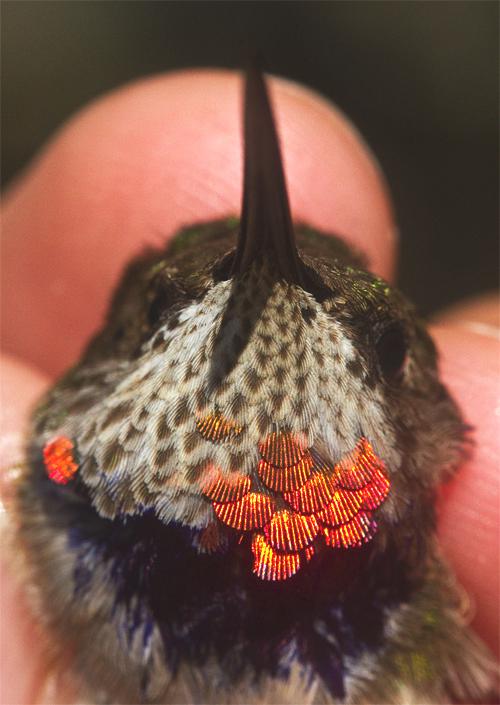
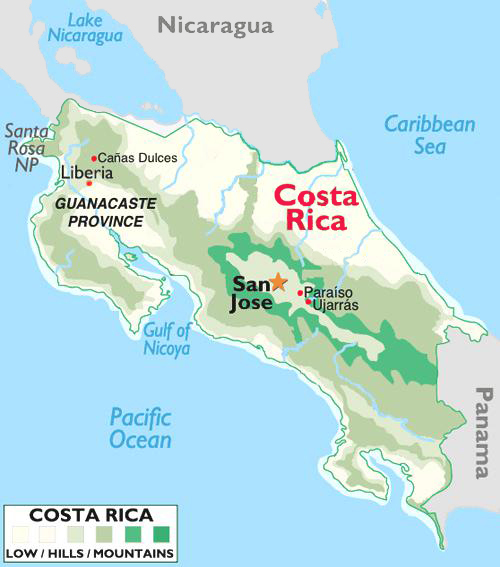

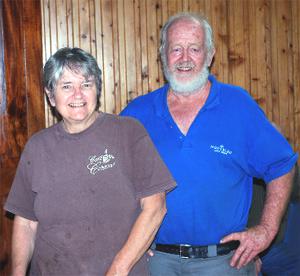 The Hiltons were honored to be part of the wedding of Ela and Ernesto in at Cachi in December 2009 and were devastated a few months ago to learn that Ela had been diagnosed with a stage four glioma. She underwent brain surgery to remove the tumor in early October and when we arrived on 6 November was still waiting for scars to heal before she starts chemo- and radiation therapy the end of the month. With her care as his understandable first responsibility, Ernesto had to take Ela for various doctor visits and was mostly unavailable for field work during our pre-group week in Costa Rica. Thus, we were content to hang out at Finca Cristina with 'Nesto's parents Linda Moyher and Ernie Carman Sr.
The Hiltons were honored to be part of the wedding of Ela and Ernesto in at Cachi in December 2009 and were devastated a few months ago to learn that Ela had been diagnosed with a stage four glioma. She underwent brain surgery to remove the tumor in early October and when we arrived on 6 November was still waiting for scars to heal before she starts chemo- and radiation therapy the end of the month. With her care as his understandable first responsibility, Ernesto had to take Ela for various doctor visits and was mostly unavailable for field work during our pre-group week in Costa Rica. Thus, we were content to hang out at Finca Cristina with 'Nesto's parents Linda Moyher and Ernie Carman Sr. 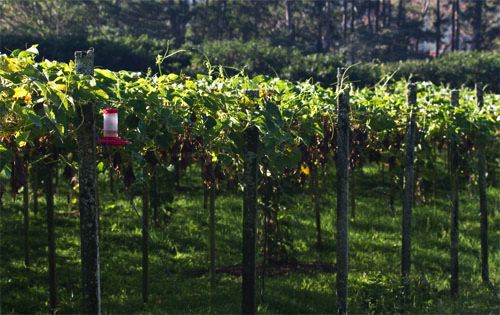

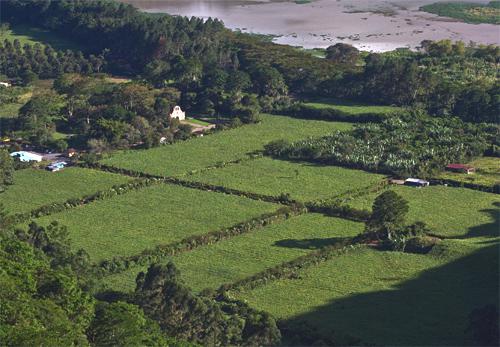
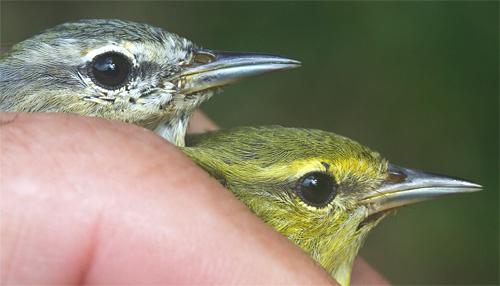
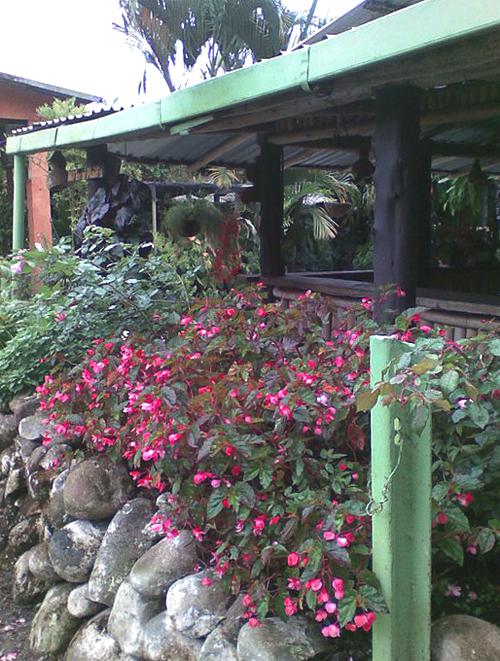

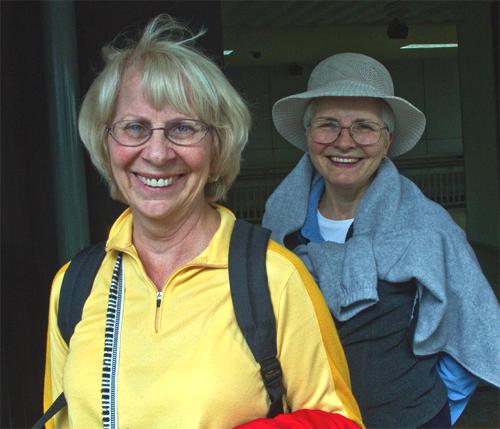
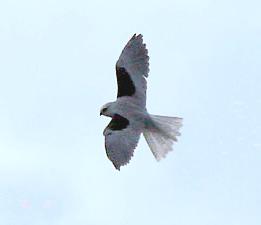 We like to think such a high percentage of repeaters is testimony that participants find our expeditions enjoyable and worthwhile.
We like to think such a high percentage of repeaters is testimony that participants find our expeditions enjoyable and worthwhile.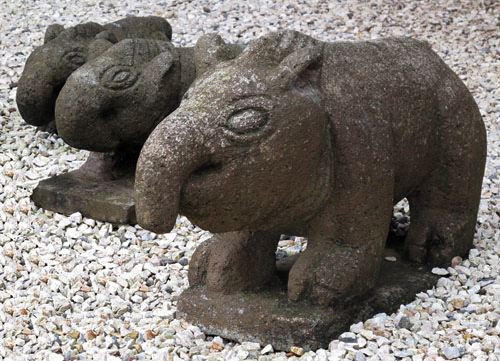
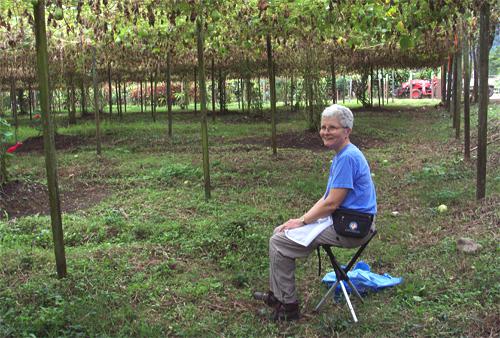
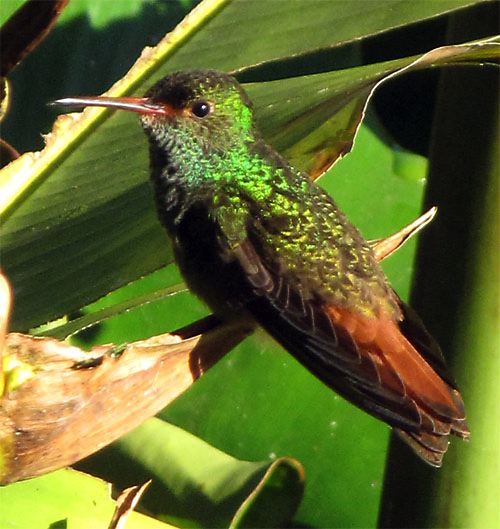 In all, the group--working in teams of two or three--carefully erected ten mist nets in Chayote Plot #1 in an area of the plantation known as El Salto; we ended up working this plot for three days. After unfurling nets, the participants got comfortable and starting net-watching
In all, the group--working in teams of two or three--carefully erected ten mist nets in Chayote Plot #1 in an area of the plantation known as El Salto; we ended up working this plot for three days. After unfurling nets, the participants got comfortable and starting net-watching 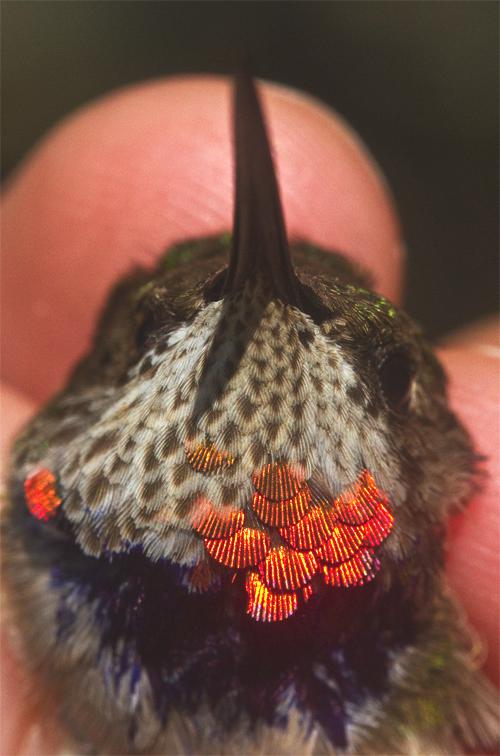
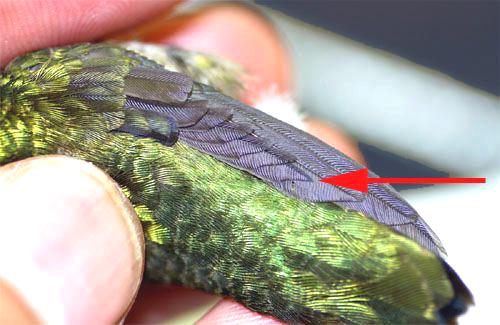
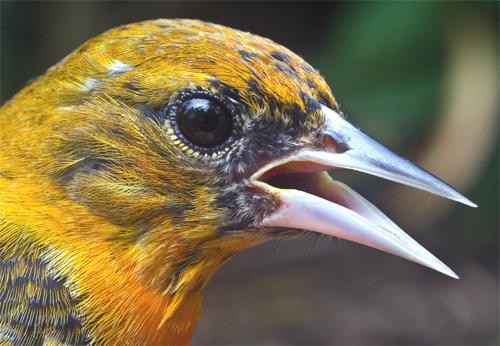
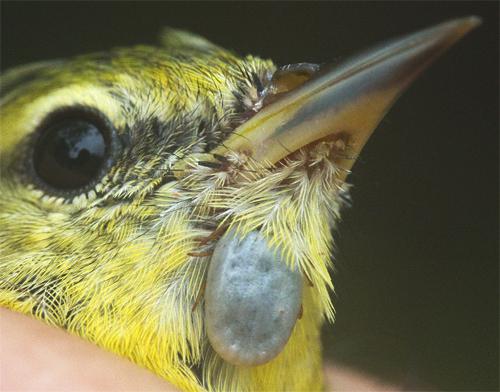
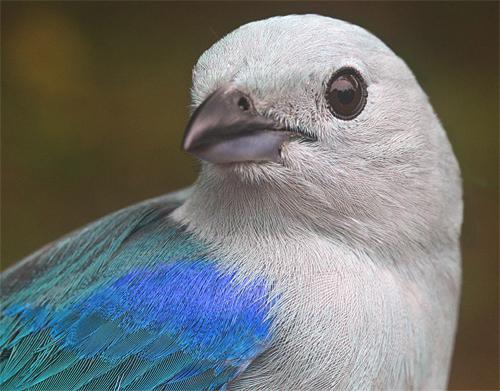

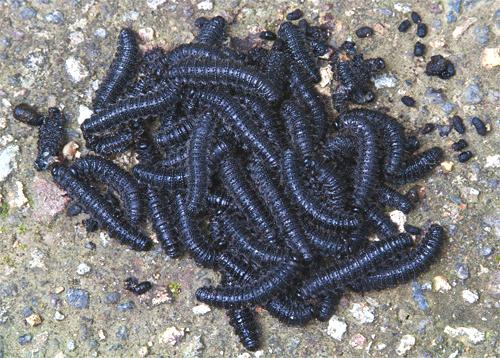

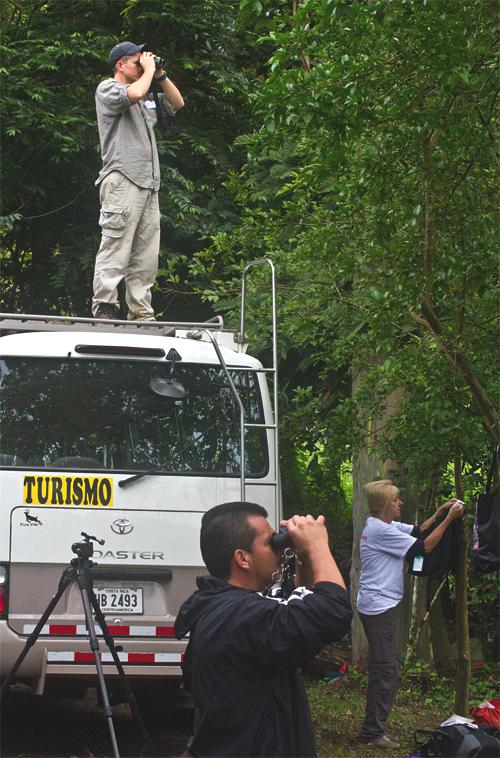
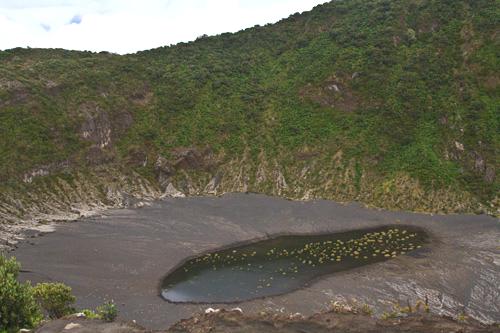
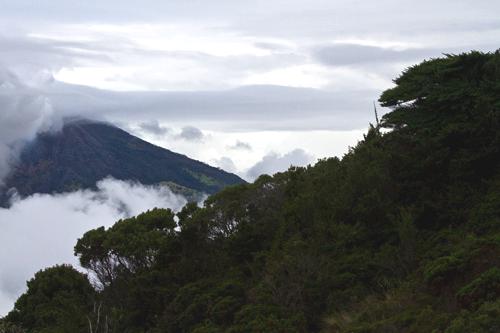
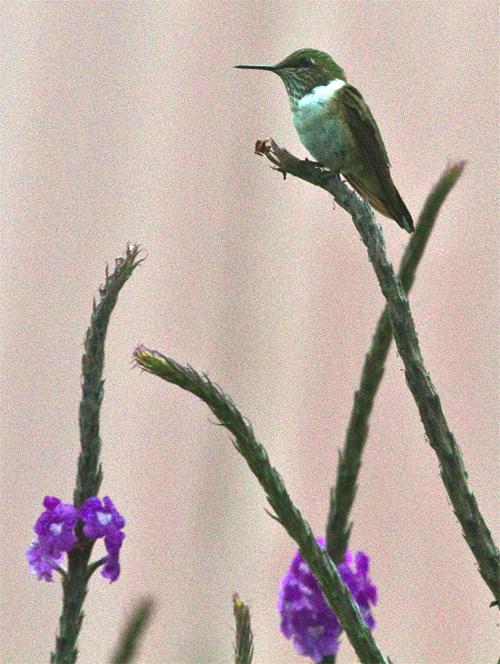
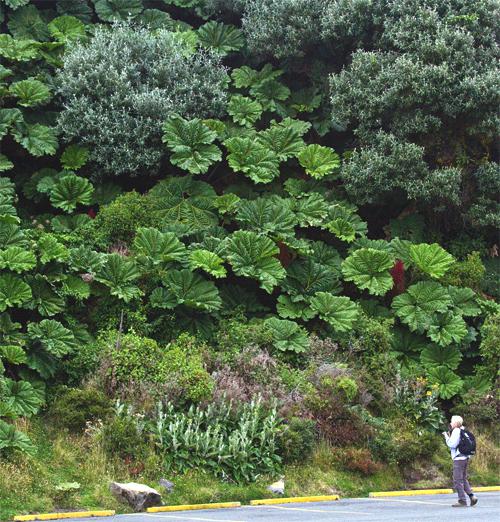
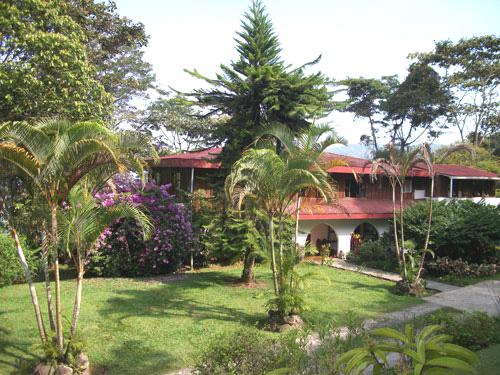
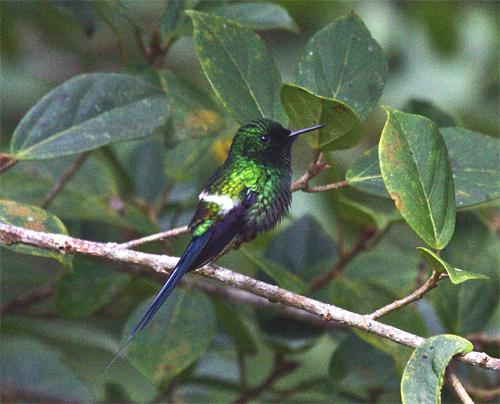


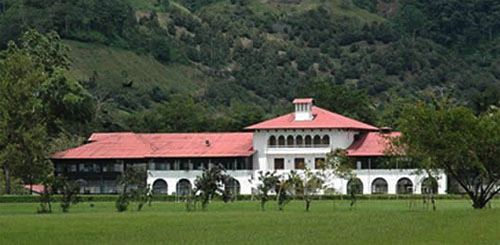
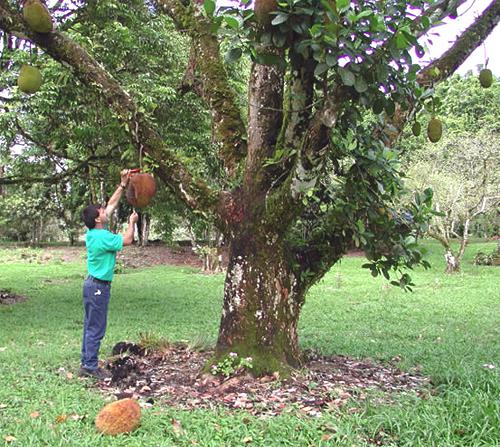
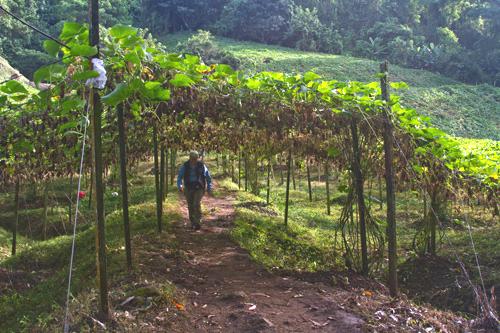
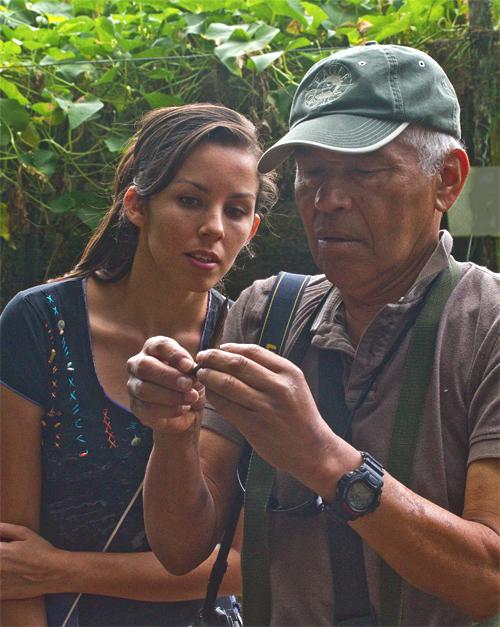
 'Nesto was especially happy to have Julio around because the esteemed gentleman was the one who got him interested in birds in the first place.
'Nesto was especially happy to have Julio around because the esteemed gentleman was the one who got him interested in birds in the first place.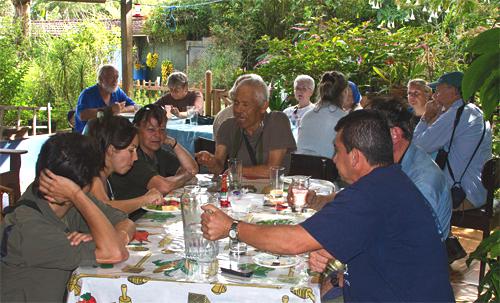
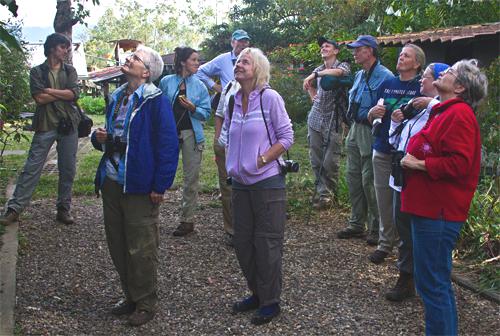
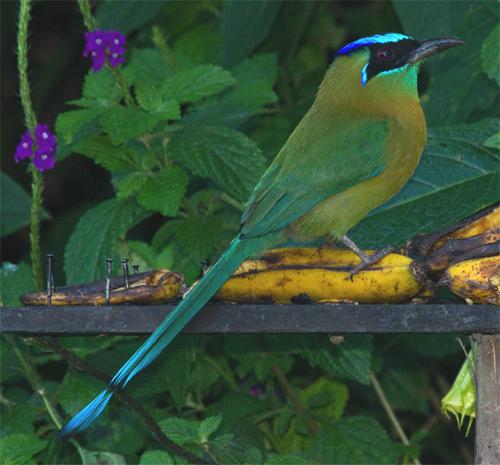
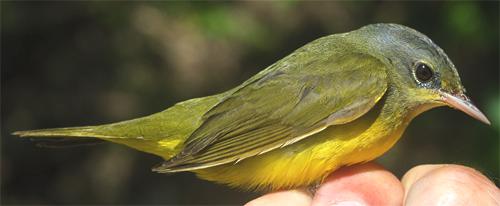



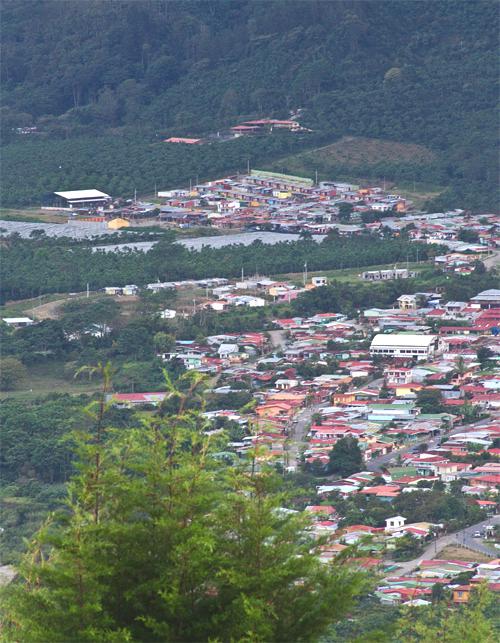
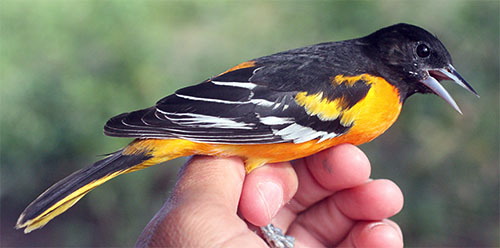
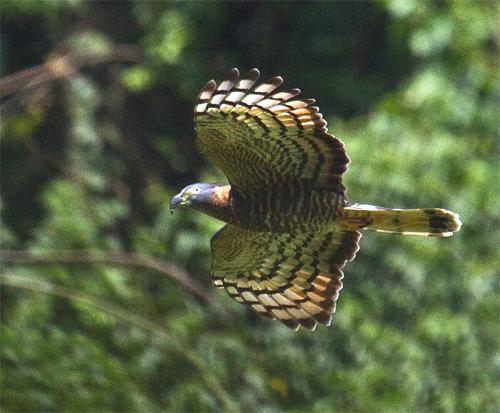

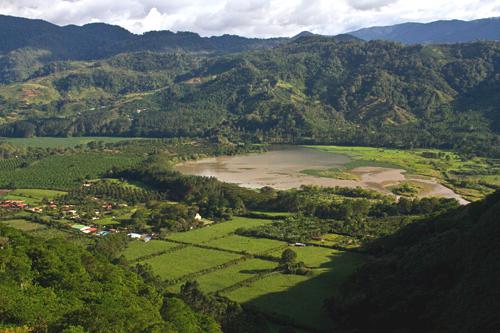
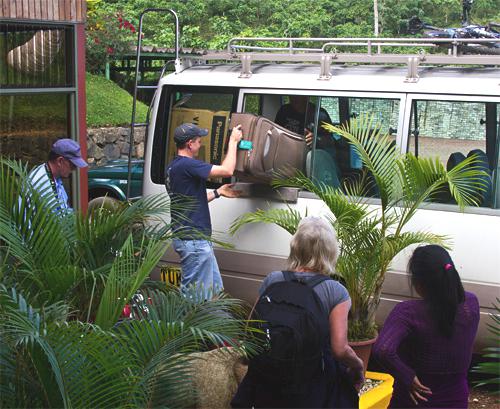
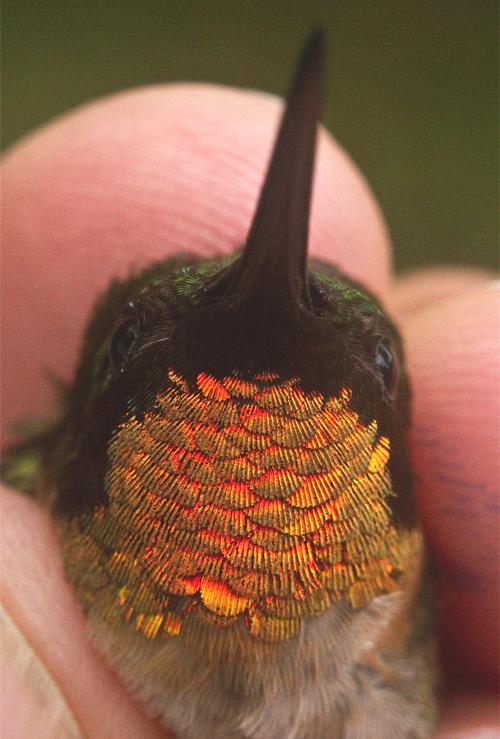
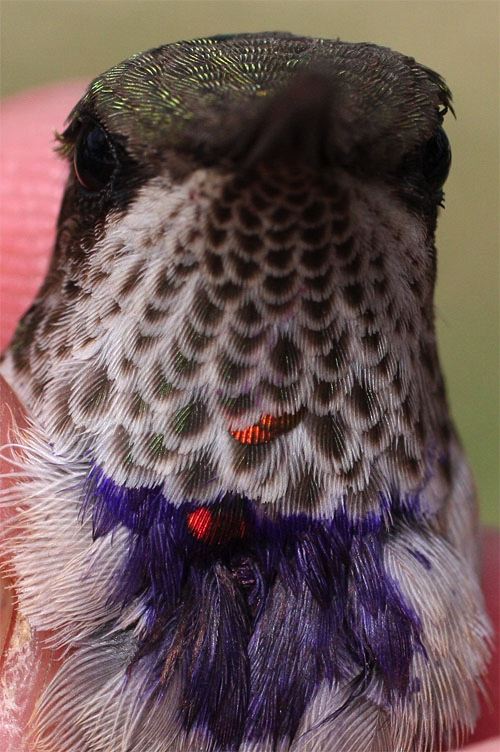
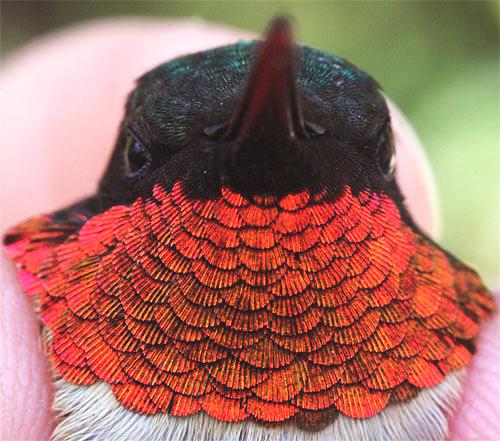
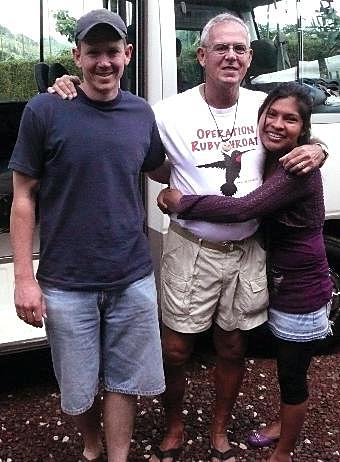

 Oct 15 to Mar 15:
Oct 15 to Mar 15: